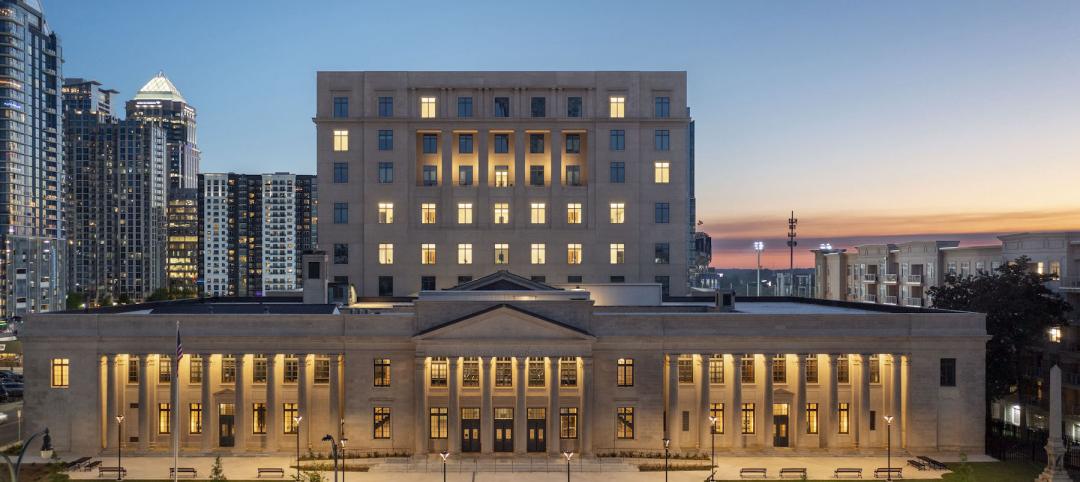 |
| The Riverwalk runs along the south bank of the Chicago River, giving the Windy City a 1.3-mile-long pedestrian promenade. |
1. Riverwalk Transforms Chicago's Second Waterfront
Canopies offer high style below bridges At several points along the riverwalk, the path runs beneath bridges where passing vehicles can shower pedestrians below with dirt and debris and where the covered, shadowy space can instill a sense of trepidation in those walking underneath. The architects' solution to these problems was the installation of canopies that act as barriers between the bridges and the pathway. Bright lighting is integrated into the canopies, which are covered with stainless steel shingles that act as mirrors to reflect the water's shimmering elegance. One Chicago architecture critic blogging about the canopies wrote: "instead of under-bridge fear, you get under-bridge delight." At several points along the riverwalk, the path runs beneath bridges where passing vehicles can shower pedestrians below with dirt and debris and where the covered, shadowy space can instill a sense of trepidation in those walking underneath. The architects' solution to these problems was the installation of canopies that act as barriers between the bridges and the pathway. Bright lighting is integrated into the canopies, which are covered with stainless steel shingles that act as mirrors to reflect the water's shimmering elegance. One Chicago architecture critic blogging about the canopies wrote: "instead of under-bridge fear, you get under-bridge delight." | |
 |
| Built on the 75-year-old ruins of New York City’s elevated freight train tracks, the High Line is a 1.45-mile urban park that winds around buildings and above streets on the city’s West Side. The $152 million rehab is inspiring similar projects throughout the world. |
2. High Line Elevates the Typical Urban Park
 |
| The main circulation path in BeachBody’s Santa Monica, Calif., office is also a 1/4 - mile walking track, complete with rubber flooring. |
3. Walking Track Fits Firm's Wellness Focus
Related Stories
Laboratories | Aug 24, 2023
Net-zero carbon science center breaks ground in Canada
Designed by Diamond Schmitt, the new Atlantic Science Enterprise Centre (ASEC) will provide federal scientists and partners with state-of-the-art space and equipment to collaborate on research opportunities.
Government Buildings | Aug 23, 2023
White House wants to ‘aggressively’ get federal workers back to the office
The Biden administration wants to “aggressively” get federal workers back in the office by September or October. “We are returning to in-person work because it is critical to the well-being of our teams and will enable us to deliver better results for the American people,” according to an email by White House Chief of Staff Jeff Zients. The administration will not eliminate remote work entirely, though.
Giants 400 | Aug 22, 2023
Top 115 Architecture Engineering Firms for 2023
Stantec, HDR, Page, HOK, and Arcadis North America top the rankings of the nation's largest architecture engineering (AE) firms for nonresidential building and multifamily housing work, as reported in Building Design+Construction's 2023 Giants 400 Report.
Giants 400 | Aug 22, 2023
2023 Giants 400 Report: Ranking the nation's largest architecture, engineering, and construction firms
A record 552 AEC firms submitted data for BD+C's 2023 Giants 400 Report. The final report includes 137 rankings across 25 building sectors and specialty categories.
Giants 400 | Aug 22, 2023
Top 175 Architecture Firms for 2023
Gensler, HKS, Perkins&Will, Corgan, and Perkins Eastman top the rankings of the nation's largest architecture firms for nonresidential building and multifamily housing work, as reported in Building Design+Construction's 2023 Giants 400 Report.
Government Buildings | Aug 7, 2023
Nearly $1 billion earmarked for energy efficiency upgrades to federal buildings
The U.S. General Services Administration (GSA) recently announced plans to use $975 million in Inflation Reduction Act funding for energy efficiency and clean energy upgrades to federal buildings across the country. The investment will impact about 40 million sf, or about 20% of GSA’s federal buildings portfolio.
Government Buildings | Aug 2, 2023
A historic courthouse in Charlotte is updated and expanded by Robert A.M. Stern Architects
Robert A.M. Stern Architects’ design retains the original building’s look and presence.
Urban Planning | Jul 26, 2023
America’s first 100% electric city shows the potential of government-industry alignment
Ithaca has turned heads with the start of its latest venture: Fully decarbonize and electrify the city by 2030.
Government Buildings | Jul 13, 2023
The recently opened U.S. Embassy in Ankara reflects U.S. values while honoring Turkish architecture
The U.S. Department of State’s Bureau of Overseas Buildings Operations (OBO) has recently opened the U.S. Embassy in Ankara, Turkey. The design by Ennead Architects aims to balance transparency and openness with security, according to a press statement. The design also seeks both to honor Turkey’s architectural traditions and to meet OBO’s goals of sustainability, resiliency, and stewardship.
Green | Jun 26, 2023
Federal government will spend $30 million on novel green building technologies
The U.S. General Services Administration (GSA), and the U.S. Department of Energy (DOE) will invest $30 million from the Inflation Reduction Act to increase the sustainability of federal buildings by testing novel technologies. The vehicle for that effort, the Green Proving Ground (GPG) program, will invest in American-made technologies to help increase federal electric vehicle supply equipment, protect air quality, reduce climate pollution, and enhance building performance.
















